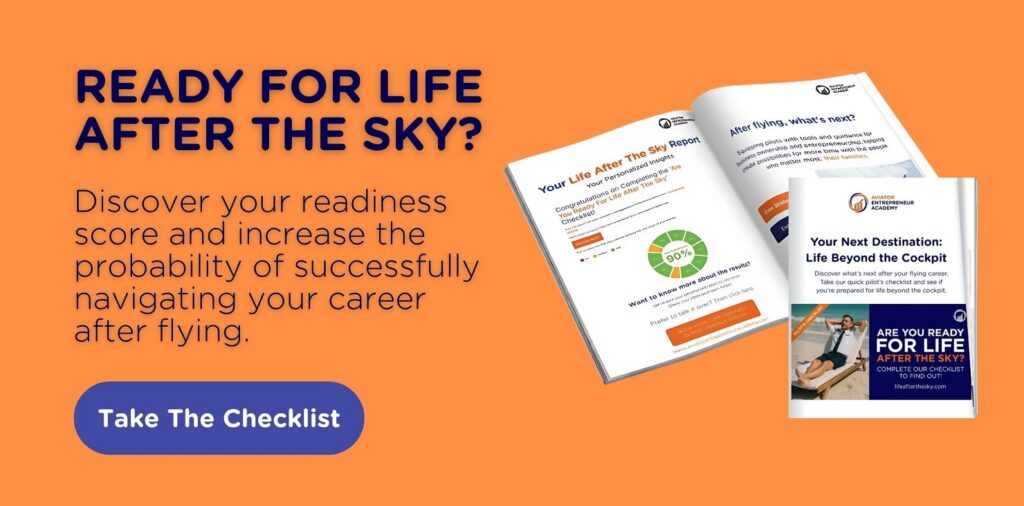Flying gives us freedom in the skies, but it does not always protect us on the ground. As pilots, we know what it feels like to work hard, spend nights away from family, and trust our salary to cover life’s biggest costs.
Yet when it comes to buying a home, the numbers often do not add up. Housing prices keep climbing, while airline pay is struggling to keep pace.
Many of us are left asking the same question: how do we secure a stable future without being crushed by the housing crisis?
Let’s find out.
Key Takeaways
- Salary vs. Housing Gap: Pilot paychecks rise slowly. Housing prices have doubled in just over a decade. What once cost 3-4 years of pay now takes 6-9 years.
- Pilot Career Traps: Union contracts limit raises. Crew bases lock us into expensive cities. Inflation outpaces salary growth every year.
- Assets Beat Inflation: Salaries lose value over time. Assets such as real estate and stocks tend to rise in value with inflation. Owning them is the only real shield.
- Time Matters Most: Compounding rewards those who start early. Every year of delay costs future security. The sooner you act, the stronger your future becomes.

The Income vs. Asset Price Reality
We’ve all seen it. Our airline paychecks go up a little each year. But the cost of a home? It’s exploding. What we could once buy with 3-4 years of salary now demands 6-9 years or more. For many of us, that’s crushing.
In fact, in the U.S., the home-price to median household income ratio used to hover around 3 to 4x decades ago. Now it’s over 5 to 6x. This means a home now costs nearly six times what a typical family earns in a year.
For instance, in the early 2000s:
- Average airline pilot salary: $80,000-120,000
- Average family home: $300,000-450,000
Today, however:
- Average airline pilot salary: $100,000-200,000
- Average family home: $600,000-1,200,000
This leaves pilots in a bind. We work hard, we save, but still struggle to buy something many of our parents took for granted. That said, the good part is that knowing this gap exists is the first step.
Once we see the math, we can start using assets to fight back, rather than just hoping for salaries to catch up.
The Pilot’s Dilemma
On paper, we earn good money, but the structure of our profession ties our hands in ways most people don’t realize.
Our pay is tied to union contracts and seniority systems. This career trap provides stability, but it also means that raises come slowly and often lag behind the real cost of living. When inflation spikes, our paychecks don’t suddenly rise to match.
At the same time, we’re tied to crew bases in cities that are often among the most expensive in the world.
We can’t simply move to a cheaper housing market without uprooting our entire career. This means we’re competing for homes in London, New York, or Dubai.
Asset Ownership Solution for Pilots
The answer to this problem isn’t trying to squeeze more out of your salary.
It’s realizing that while salaries lose value over time, assets don’t. A paycheck is fixed in today’s dollars, but assets like real estate, stocks, businesses, and intellectual property grow as inflation pushes prices higher.
Take housing as an example. According to the Federal Reserve Bank of St. Louis, the median U.S. home price rose from about $200,000 in 2010 to over $420,000 in 2024.
That’s more than a 100% increase in just 14 years. Pilot salaries did not double in that time. But if you owned a house during that period, the value of your property kept pace with inflation and then some.
This was just one example. There are many more assets you can own to counteract rising inflation.
As Robert Kiyosaki, author of Rich Dad Poor Dad, once said:
“The rich don’t work for money. They make money work for them.”
Which Practical Asset Strategies Pilots Can Use?
As pilots, we have unique tools, such as global travel and international exposure, that many professionals lack.
Here’s how you can turn those into fundamental strategies:
Strategy 1: Remote Real Estate Investment
Pilots travel the world, and that gives us a unique edge in spotting housing markets that others only read about. Instead of being locked into the inflated market around your crew base, use your flight routes to explore growing cities with lower entry prices and higher rental yields.
For example, rental properties in cities like Cleveland and Memphis can generate returns of 7–9%, far higher than those in average coastal markets.
For this strategy:
- Use layovers or travel benefits to visit potential markets.
- Run the numbers using simple ratios (rent-to-price, cash flow after expenses).
- Work with turnkey providers or property managers who handle tenants and maintenance.
Strategy 2: Business Asset Creation
Our aviation experience is an asset in itself. Think of all the ways we can package it, such as consulting for aspiring pilots, online training, or even building a brand around an aviation lifestyle. Unlike salary, businesses aren’t capped.
Digital products are especially powerful. A recorded course, a training manual, or a YouTube channel scales without requiring additional flying hours.
To get started:
- Identify what aviation knowledge or skill you can share.
- Choose a format (course, e-book, coaching, or digital community).
- Build small first. Select one product or one service and refine it.
- Use digital platforms to reach a global audience, not just your local base.
Strategy 3: Index Fund Dollar-Cost Averaging
Pilots understand discipline, and investing needs the same approach. Rather than trying to time the market, we can use dollar-cost averaging. In simple terms, DCA means investing a fixed amount regularly into index funds.
Over time, this evens out volatility and compound growth. You’d be surprised to know that the S&P 500 has averaged 10% annual returns over the past 50 years.
So, even if you invest $500 a month in it, that’ll be over $500,000 over 25 years, based on the historical average.
Here’s how you can start:
- Open a brokerage account or retirement plan.
- Automate contributions that align with your pay schedule.
- Focus on low-cost index funds (like S&P 500 or total market funds).
- Let compounding do the work instead of chasing hot picks.
Strategy 4: International Diversification
We already think globally, and that’s a massive advantage in investing. While most people only invest domestically, we can use our exposure to different countries and currencies to spread risk and find growth.
Emerging markets in Asia, Africa, and Latin America are growing faster than developed markets. Remember, pilots who diversify can capitalize on economic growth while reducing their reliance on a single economy.
You can approach this strategy by:
- Research global ETFs or mutual funds that track international markets.
- Diversify currencies by holding assets in different regions.
- Use your network from flying to connect with investors abroad.
- Treat global diversification as insurance against domestic downturns.
Ready to Take Control of Your Assets?
Flying has given us discipline, global awareness, and the ability to adapt to any challenge. But when it comes to money, many of us are still stuck relying on a salary that can’t keep pace with rising costs.
So, what’s the wait now? Are you worried you might not be ready for building an asset?
If you’re not sure, our Life After The Sky Checklist can give you clarity in under 3 minutes. It shows exactly where you stand today and what steps you can take next.
Your future doesn’t have to be uncertain. The checklist is where you start.
Invitation to Join Our FREE Strategy Session
Most pilots are one honest conversation away from clarity. This is that conversation.
Complete our “Life After the Sky” checklist, then join me for a FREE 15-minute “Strategy Session” via Zoom.
This session has been created for pilots who want to take ownership of what comes next.
Those who want action, not just to talk about it.
In just 15 minutes, we’ll:
- Review your checklist results
- Identify the one obstacle holding back your reinvention
- Translate your checklist results into a clear starting point
Start your pre-flight assessment for the next chapter of your journey by Booking your free strategy session here!



